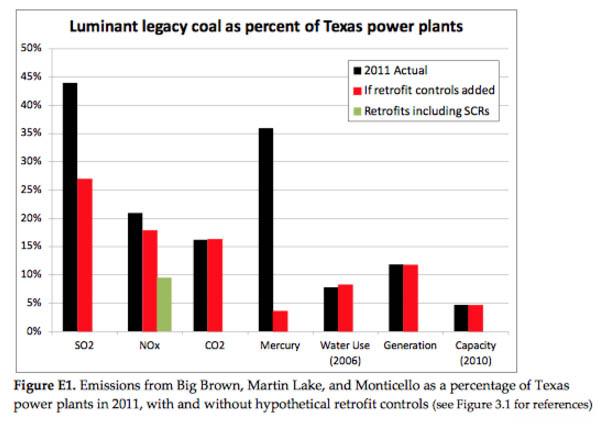June 2013
Prepared by: Daniel Cohan, Ph.D.
As Energy Future Holdings faces an uncertain financial future, three of its legacy coal-fired power plants from the former TXU feature prominently in the energy and air quality challenges confronting Texas. These 1970’s vintage facilities – Big Brown, Martin Lake, and Monticello – are among the leading emitters of air pollutants and greenhouse gases in Texas. Their emissions of nitrogen oxides (NOx) – more than 30,200 tons in 2011 – have been shown to contribute to excess levels of ground-level ozone in the Dallas- Fort Worth and Tyler-Longview-Marshall regions. Substantial reductions in NOx emissions will be needed in order for these regions to attain air quality standards for ozone, a pollutant that can cause respiratory illness and premature mortality. Their emissions of sulfur dioxide (SO2) have been modeled to exceed SO2 standards up to 10 miles downwind of each plant, and contribute to unhealthful particulate matter over far longer distances. Ozone and particulate matter increasingly have been linked to illness and mortality, prompting the Environmental Protection Agency to tighten air pollution standards for these pollutants. Meanwhile, these three power plants ranked nationally among the top five emitters of mercury, a potent neurotoxin linked to IQ impairment and other developmental problems in children.

This document contains copyrighted material whose use has not been specifically authorized by the copyright owner. SEED Coalition is making this article available in our efforts to advance understanding of ecological sustainability, human rights, economic democracy and social justice issues. We believe that this constitutes a "fair use" of the copyrighted material as provided for in section 107 of the US Copyright Law. If you wish to use this copyrighted material for purposes of your own that go beyond "fair use", you must obtain permission from the copyright owner.